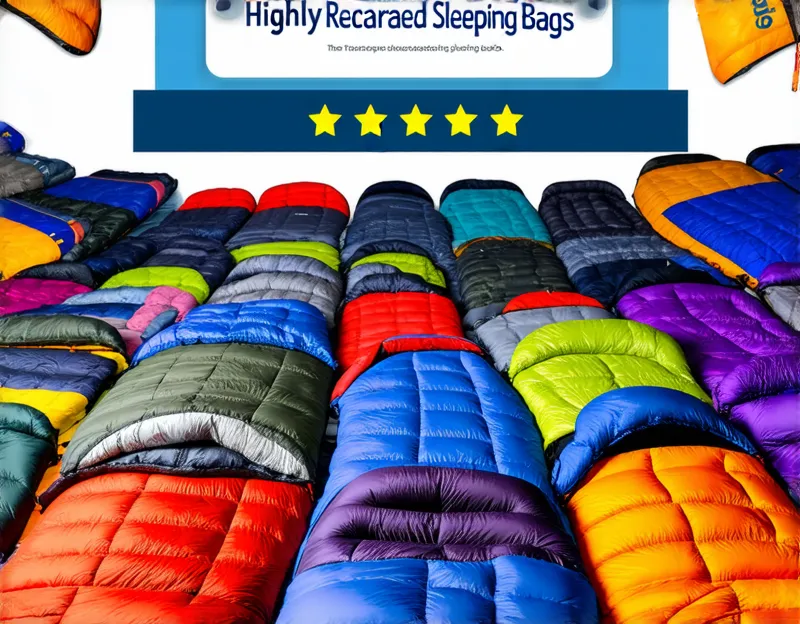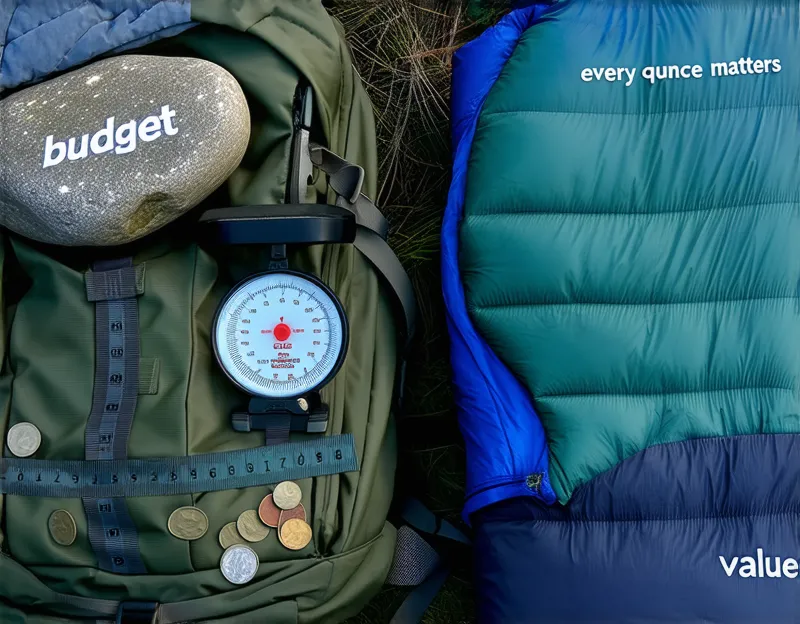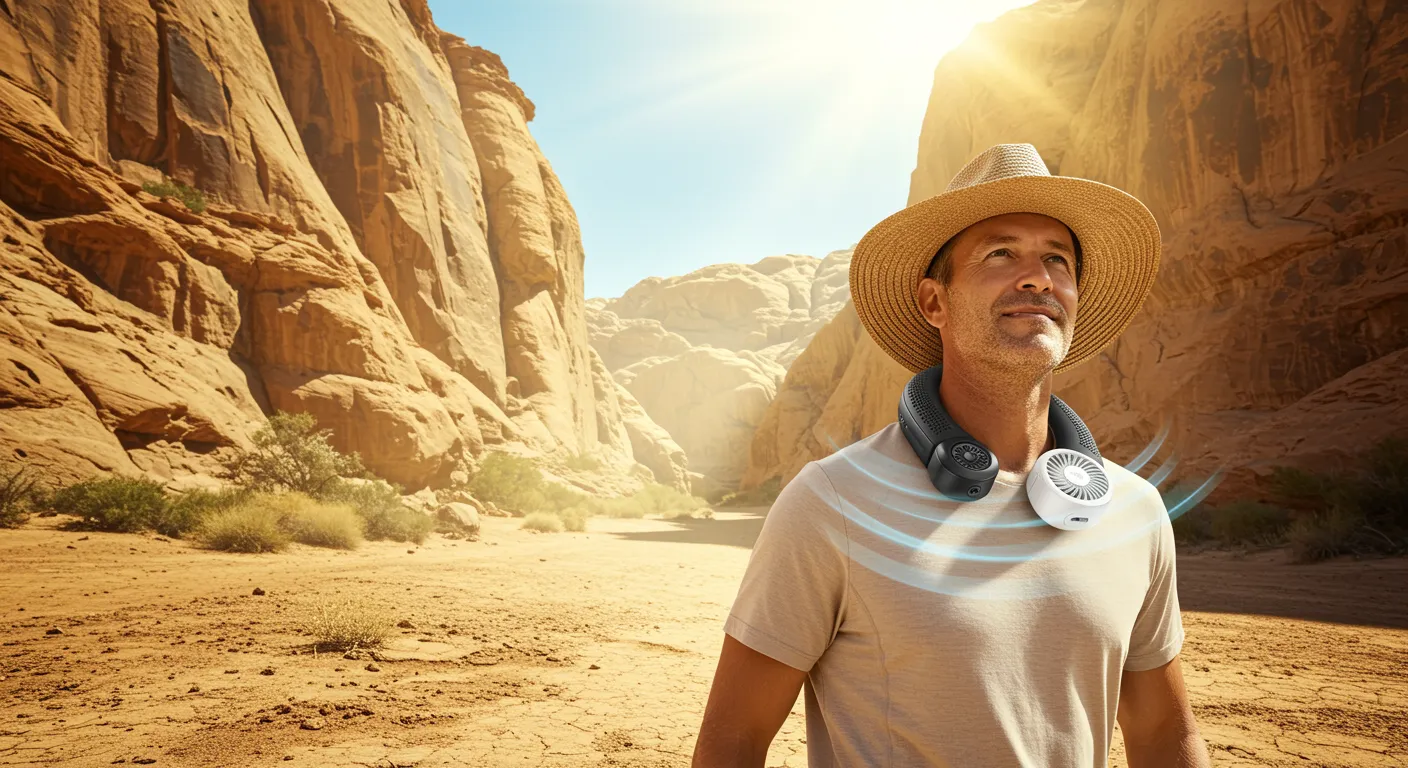
Sleep Under the Stars: Your Ultimate, Up-to-Date Guide to Choosing the Best Sleeping Bag
Quick Picks: Our Top Product Recommendations
A fast overview of our top picks—scroll to see all, or jump to details below.
Sleep Under the Stars: Your Ultimate, Up-to-Date Guide to Choosing the Best Sleeping Bag
There's an undeniable magic to sleeping under a canopy of stars, the crisp night air invigorating your senses. Whether you're a seasoned thru-hiker conquering challenging trails, a weekend warrior seeking solace in the wilderness, or a casual camper enjoying a family getaway, a reliable sleeping bag is an essential piece of gear that dictates the comfort and ultimately, the success, of your outdoor experience. Far from being just a simple blanket, modern sleeping bags are sophisticated pieces of equipment, engineered with advanced materials and thoughtful design to keep you warm and comfortable in diverse conditions. The technology has evolved dramatically over the years, moving from bulky, heavy options to incredibly lightweight, compressible bags that offer exceptional warmth-to-weight ratios. Understanding these advancements and the current market offerings is crucial for making an informed decision, as the right sleeping bag can truly make or break your adventure. This guide is designed to be your comprehensive resource, diving deep into the world of sleeping bags, providing you with the knowledge you need to navigate the options, and highlighting some of the currently most highly-regarded models based on recent research and pricing to ensure you find the perfect fit for your needs and budget.

The Heart of the Shelter: What is a Sleeping Bag and Why Does it Matter?
At its core, a sleeping bag is a personal, insulated shelter designed to trap your body heat and protect you from the cold ground and ambient air temperature. It's a critical component of your outdoor sleeping system, working in conjunction with a sleeping pad (which provides insulation from the ground) and potentially a tent or shelter. The primary purpose of a sleeping bag is to create a microclimate around your body, minimizing heat loss through conduction, convection, and radiation.

The importance of a good sleeping bag cannot be overstated. A cold, uncomfortable night can lead to exhaustion, decreased morale, and even compromise safety in extreme conditions. A well-chosen sleeping bag allows for restful sleep, enabling you to wake up refreshed and ready to tackle the day's adventures. Moreover, the current market offers a remarkable range of options catering to various needs, from ultralight bags for minimalist backpackers to plush, spacious bags for car campers. Understanding the different types and their intended uses is the first step towards finding your ideal match.

Decoding the Warmth Factor: Temperature Ratings and Insulation Types
One of the most critical factors in choosing a sleeping bag is its temperature rating. This rating, typically displayed prominently on the bag, indicates the lowest temperature at which the bag is expected to keep an "average" sleeper warm. However, it's vital to understand that these ratings are often standardized (like the ISO 23537 standard, formerly EN ratings), developed in laboratory settings with standardized test subjects. Individual comfort levels can vary significantly based on factors like metabolism, clothing worn, ground insulation, hydration, and even altitude. Many manufacturers will provide a "comfort," "limit," and "extreme" rating.
- Comfort Rating: This is the temperature at which a typical woman can expect to sleep comfortably.
- Limit Rating: This is the temperature at which a typical man can sleep for eight hours without waking up due to cold.
- Extreme Rating: This is a survival rating, indicating the minimum temperature at which the bag will prevent death from hypothermia. It's not a comfort rating and should not be relied upon for overnight warmth.
For most recreational camping and backpacking, focusing on the comfort rating is generally recommended, and it's often wise to choose a bag with a rating slightly lower than the coldest temperature you anticipate encountering.
✨ Discover More You Might Like
The warmth of a sleeping bag is primarily determined by its insulation. The two main types are:
- Down Insulation: Made from the fluffy clusters found beneath the feathers of ducks and geese, down is renowned for its exceptional warmth-to-weight ratio and compressibility. High-quality down is measured by "fill power," which indicates the volume 1 ounce of down occupies when compressed. Higher fill power (e.g., 800-fill, 900-fill) signifies greater loft, warmth, and compressibility. Down bags are typically more expensive and require careful handling to avoid moisture, as wet down clumps and loses its insulating properties. Hydrophobic down, treated to resist moisture, has become increasingly popular.
- Synthetic Insulation: Made from polyester or other synthetic fibers, synthetic insulation is less expensive than down and performs better when wet. It's also easier to care for. However, synthetic insulation is generally heavier and less compressible than down for the same warmth. Over time, it can also lose loft and insulation properties faster than down. Different types of synthetic insulation exist, with varying levels of performance and durability.
The choice between down and synthetic often comes down to a balance of budget, intended use, and tolerance for moisture.
Key Features and Design Considerations: Beyond the Basics
Beyond insulation and temperature rating, several other features and design elements significantly impact a sleeping bag's performance, comfort, and suitability for different activities:
- Shape: The most common shapes are mummy, rectangular, and semi-rectangular.
- Mummy bags are tapered to fit snugly around the body, minimizing dead air space for maximum warmth and compressibility. They are ideal for backpacking where grams and packed size are critical.
- Rectangular bags offer more room to move, making them more comfortable for side or stomach sleepers and for car camping. They are generally less warm and bulkier than mummy bags of the same temperature rating.
- Semi-rectangular bags strike a balance, offering more room than a mummy bag but still maintaining some of the warmth and compressibility benefits.
- Shell Fabric: The outer fabric, or shell, needs to be durable, water-resistant (or waterproof/breathable in some cases), and often lightweight. Ripstop nylon is a common choice.
- Liner Fabric: The inner fabric, or liner, should be soft and comfortable against the skin. Materials like nylon taffeta or polyester are frequently used.
- Zipper: A high-quality zipper is crucial for ease of entry and exit and for ventilation. Anti-snag zippers are a valuable feature. Some bags feature a full-length zipper for maximum ventilation, while others have partial zippers or multiple zippers.
- Draft Collar and Hood: These are critical features for retaining heat in colder conditions. A draft collar is a tube of insulation that wraps around your neck, preventing warm air from escaping. A cinchable hood helps trap heat around your head.
- Footbox: The shape and insulation of the footbox impact comfort and warmth for your feet. Some footboxes are contoured to increase warmth.
- Pockets: Internal or external pockets can be useful for storing small items like a headlamp or phone.
- Stuff Sack and Storage Sack: Most sleeping bags come with a stuff sack for compressing the bag for packing and a larger storage sack for allowing the insulation to loft fully when not in use.
Choosing the Right Bag for Your Adventure: Tailoring to Your Needs
Selecting the best sleeping bag is a personal decision that depends heavily on your intended use, the climate you'll be camping in, your typical sleeping preferences, and your budget. Consider these scenarios:
- Backpacking and Thru-Hiking: Prioritize lightweight, compressible bags with a good warmth-to-weight ratio. Down bags with a high fill power are often preferred unless you anticipate very wet conditions. A mummy or semi-rectangular shape is generally ideal. Focus on the comfort rating relevant to the lowest temperatures you expect.
- Car Camping and Casual Camping: Comfort and durability are often higher priorities than ultralight weight or compressibility. Rectangular or spacious semi-rectangular bags are popular choices. Synthetic insulation can be a good value option and is less sensitive to moisture.
- Cold Weather Camping: Invest in a bag with a low temperature rating (or a high comfort rating for very cold conditions). Features like a robust draft collar, a cinchable hood, and a well-insulated footbox are essential. Consider a bag with hydrophobic down or a high-quality synthetic insulation designed for extreme cold.
- Warm Weather Camping: A lightweight bag with a higher temperature rating (or even a simple sleeping bag liner) is sufficient. Breathability and ventilation become more important.
Top Recommended Sleeping Bags: Current Models for Various Adventures
Based on our research into current market offerings, specifications, pricing, and recent user reviews, here are some highly-regarded sleeping bags that cater to different needs and budgets. Please note that availability and exact pricing can fluctuate.
✨ Discover More You Might Like



REI Co-op Magma 15 Sleeping Bag



Marmot Lithium 0 Sleeping Bag





The North Face Eco Trail Synthetic 20 Sleeping Bag
Buy on Amazon




Big Agnes Sidewinder SL 20 Sleeping Bag
Buy on Amazon




Feathered Friends Egret UL 20 Sleeping Bag (Women's)
Buy on AmazonNEMO Disco 15 Sleeping Bag
Making the Final Decision: Weighing Factors and Looking Ahead
Choosing the perfect sleeping bag is a process of balancing competing priorities. Start by honestly assessing your primary intended use (backpacking vs. car camping), the typical temperature range of your adventures, and your preferred sleeping style. Carefully consider the advantages and disadvantages of down versus synthetic insulation for your expected environment. Look closely at the temperature rating – remember that manufacturer ratings are often a guideline, and personal comfort levels vary. Don't overlook the importance of features like the zipper quality, draft collar, hood, and footbox, as these significantly impact real-world performance and comfort.
Think about the long-term durability and care requirements of the bag. Down bags, while offering superior performance, require more careful handling and specialized cleaning. Synthetic bags are generally more robust and easier to maintain. Consider the packed size and weight, especially if you plan on backpacking, where every ounce and inch matters. Finally, set a realistic budget and explore options within that range. While premium bags offer cutting-edge performance, there are excellent value options available that will provide years of comfortable sleep under the stars.
The sleeping bag market is constantly evolving with new materials and design innovations. Researching recent models and reviews, as we've aimed to do in this guide, ensures you're aware of the latest advancements and potential improvements. By carefully considering the factors discussed and exploring the currently recommended models highlighted here, you'll be well-equipped to make an informed decision and invest in a sleeping bag that will reliably keep you warm and comfortable on countless outdoor adventures. Sweet dreams under the vast, starry sky!












